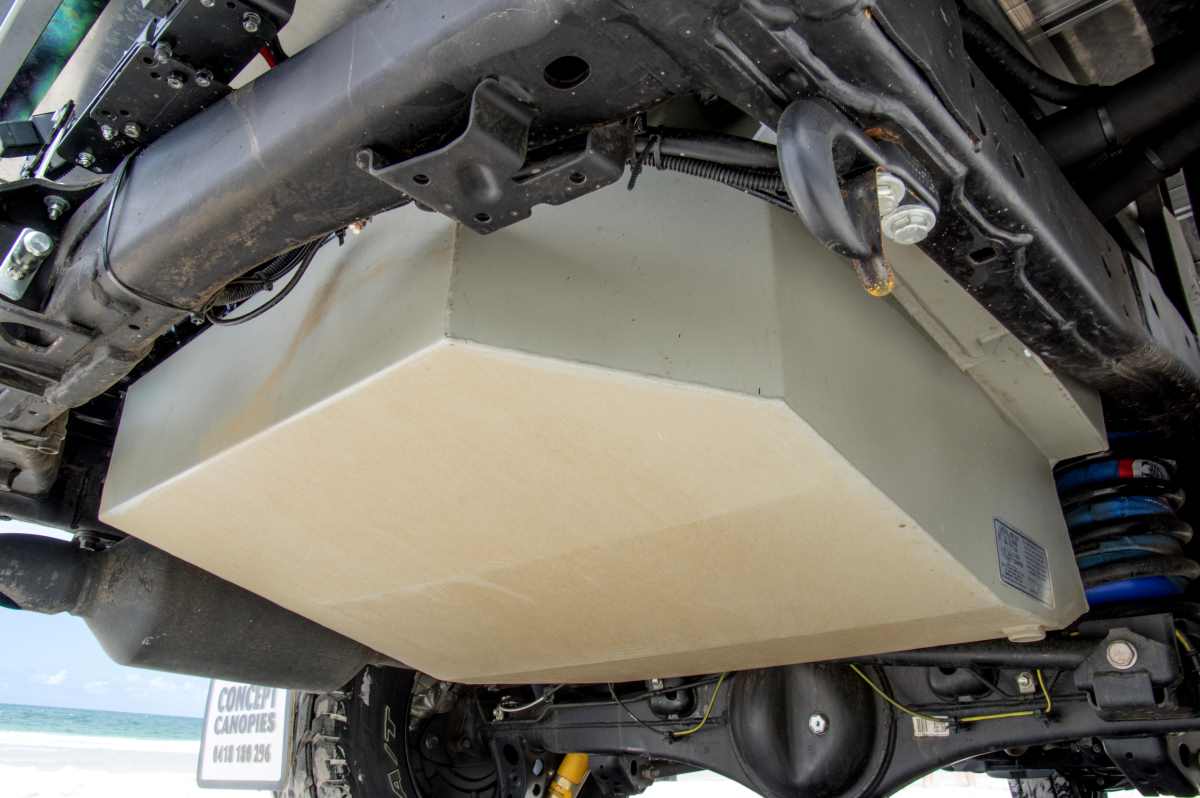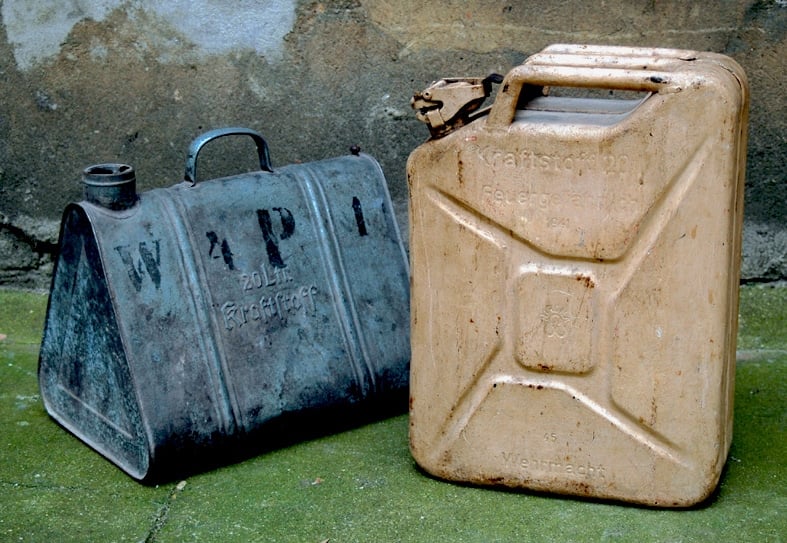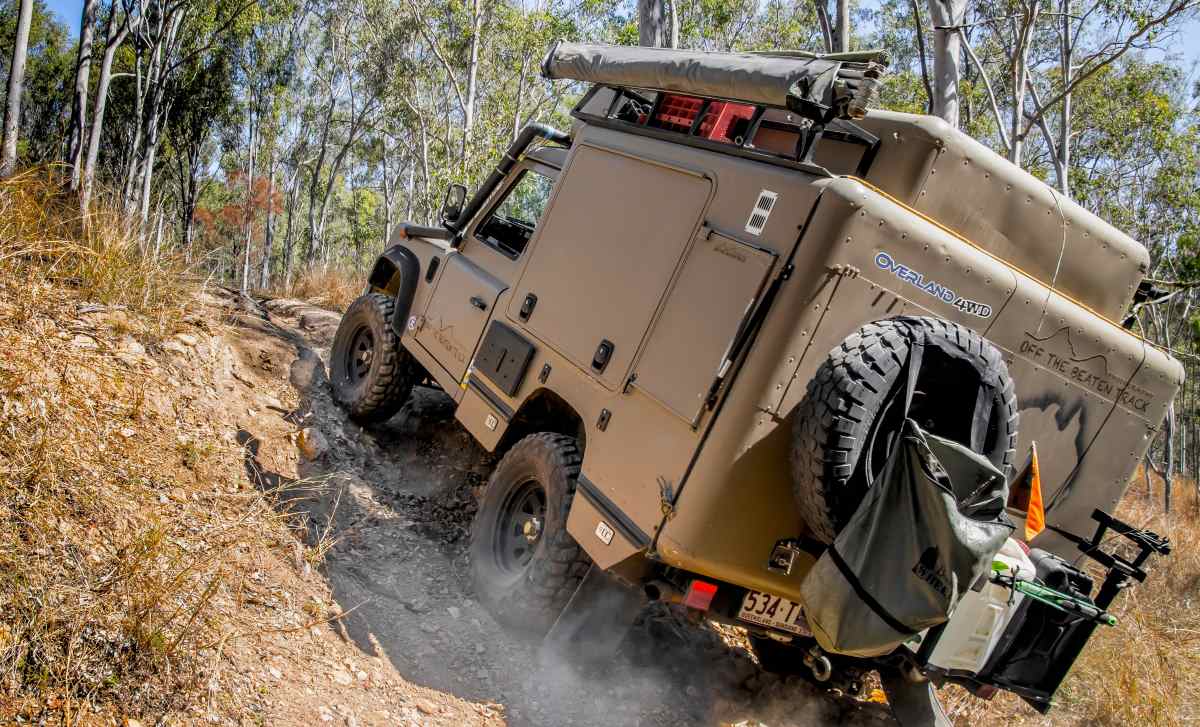How to carry extra fuel in your 4×4
Never miss an opportunity to fill up and always carry extra fuel when you’re heading off-road for an extended time - here’s what you need to know.
Advertisement
Never miss an opportunity to fill up and always carry extra fuel when you’re heading off-road for an extended time. Here’s what you need to know.
Australia is a big place. If you’re travelling through the outback, fuel stops can be few and far between. So, if upgrading your vehicle’s fuel tank is something you’ve decided to ‘get around to next time’, carrying extra fuel with you is a must.
See, the fuel tank in most modern 4X4s averages around 85 litres. This is just too small for remote area touring. Your speed will often be low and possibly in low-range too. Thus, fuel use will increase. However, some brands, like Toyota, offer up to 120 litres (in a main and sub-tank) depending on the vehicle.
Obviously, investing in a long-range fuel tank, or adding an auxiliary tank is the best and safest way to increase your range in the outback. But there are plenty of ‘portable’ options.

It’s a good idea to know how much fuel your 4X4 uses both in general driving conditions and when fully loaded for outback touring. Doing this before you head off on your next adventure helps. It will mean you’ve got a good idea of just how far you’ll be able to get on a tank of fuel. Also, you’ll know just how much extra fuel you might need depending on the distance between fills.
Remember, carrying extra fuel is all part of your vehicle’s payload. A full jerry can (20L) will weigh around 25kg. Thus, you need to think carefully about how many full jerry cans you’re carrying, be they filled with fuel or water, and where you load them. You’re legally allowed to carry up to 250L.
The most common place is to hang them off the back of your vehicle and sometimes on the roof. But this will affect your vehicle’s handling. Depending on what else you’re carrying on the roof, it might exceed your vehicle’s dynamic (driving) roof load. More than that, this ‘guide’ is really just for diesel (it’s considered non-combustible). If you’re carrying unleaded fuel in jerry cans, only carry them in non-impact zone locations (think the tray of a pickup).
Even if you carry extra fuel with you, it pays to pack a fuel tank repair kit. These things cost around $40. They can be used to patch both metal fuel tanks and jerry cans. Because even if you’ve got extra fuel, a leak in your main tank will make it useless.
So, when you’re out and about, make sure you check the fuel tank at the end of each day’s driving for any leaks.

The jerry can is the go-to for most people needing to carry extra fuel. And has been since before World War Two. Designed by the Germans, it was originally known as the Wehrmacht-Eineitskanister (which translates as, armed forces unit canister). The slang name, given by Allied forces, was jerry can because of the slang name for Germans being, Jerry.
The German fuel canister began being stockpiled back in 1925 with the design largely unchanged today. See, the Allies used what was nicknamed, the flimsy. This was a smaller drum than the jerry can (20L). It was made from a handful of flat, thin tin that was welded together. The handle was thin and uncomfortable to carry once filled with fuel. Fuel would often leak from the weld lines. The jerry can was a stroke of genius. The Allies eventually reverse-engineered the design. These days, you can get both the steel version and a polyethylene (plastic) version (pub fact – these are called jerry jugs).
It goes without saying that if you’re using a jerry can, you should never, ever store it inside your vehicle. Why? Because of the fumes, duh. If you drive a wagon, store them on the back or the roof. If you drive a ute, store them in the tray away from anything that might be a potential ignition source.
There are plenty of storage racks for jerry cans available for a variety of vehicles. While the best place to store a jerry can/jug is on the back of your vehicle or in the tray of a ute, sometimes you need to place them on your roof. If you need to do this, then make sure you’ve got a suitable roof rack set-up and a way of securing the jerry can. Be mindful that storing anything on the roof of your vehicle needs to remain within its dynamic roof load. Additionally, the handling will be affected because of the raised centre of gravity. More than that, loading and unloading more than 20kg of weight from the roof of your vehicle will be tricky. So, be very careful.
One of the extra reasons the jerry can was such a hit with troops was because the design allowed for up to four to be carried by one person. Both the filling and pouring could be performed by one hose (instead of needing a hose and a funnel). The construction of a jerry can is also, by its nature, incredibly strong and resistant to fuel leaks. However, you should always inspect your jerry can regularly. Do this before, during, and after a trip to make sure it’s in good condition. And, when filling your jerry can, always remove it from the vehicle and place it on the ground next to the bowser.

If you don’t like the idea of carrying jerry cans on either the back or the roof of your vehicle, then there are alternatives. These alternatives come in the form of portable rigid polyethylene tanks. These tanks are available in a range of shapes (some shaped to conform to the rear seat footwell and others over the wheel arches in the back of a ute) and sizes from 50-100L and more for 4X4 applications. Beyond the tank itself, you can get 12V pumps for them. This makes filling your main tank a little easier.
If neither a jerry can nor a rigid portable poly tank works for you, then there’s always the collapsible ‘jerrycan’. These things are generally around 20L in size. When not filled with fuel, they collapse to the size of an A4 pad. When filled, they measure around 540mm x 620mm. While I personally haven’t used a bladder, claims are they’re completely odour proof and impact resistant from a height of 30m.
WORDS BY ISAAC BOBER. IMAGES BY ARNOLD ARCHIVE.